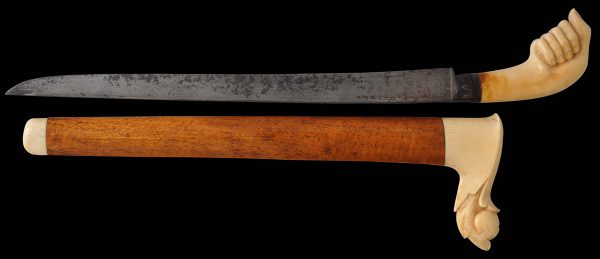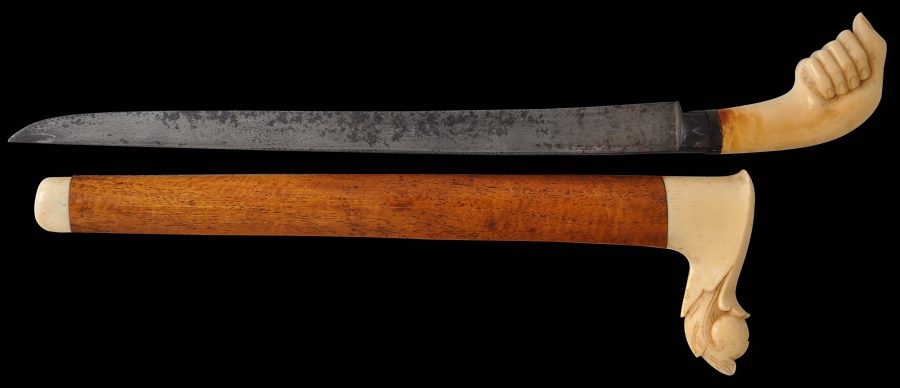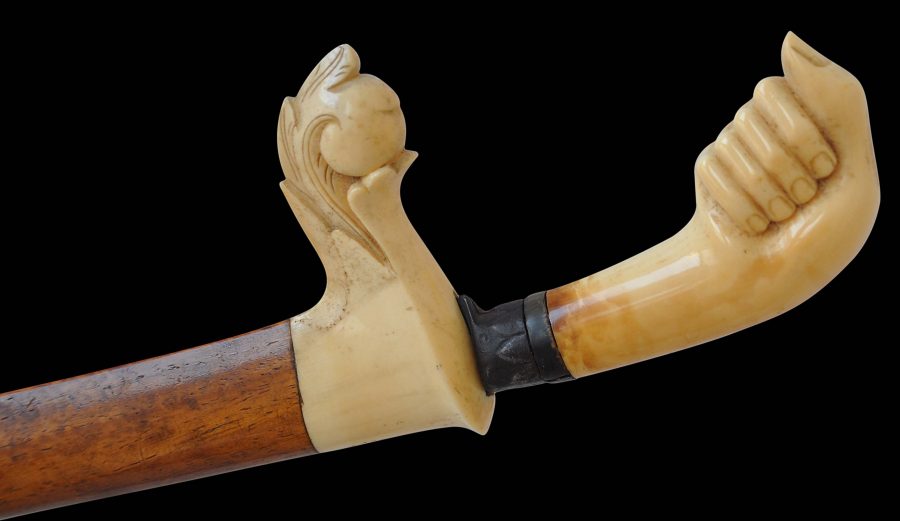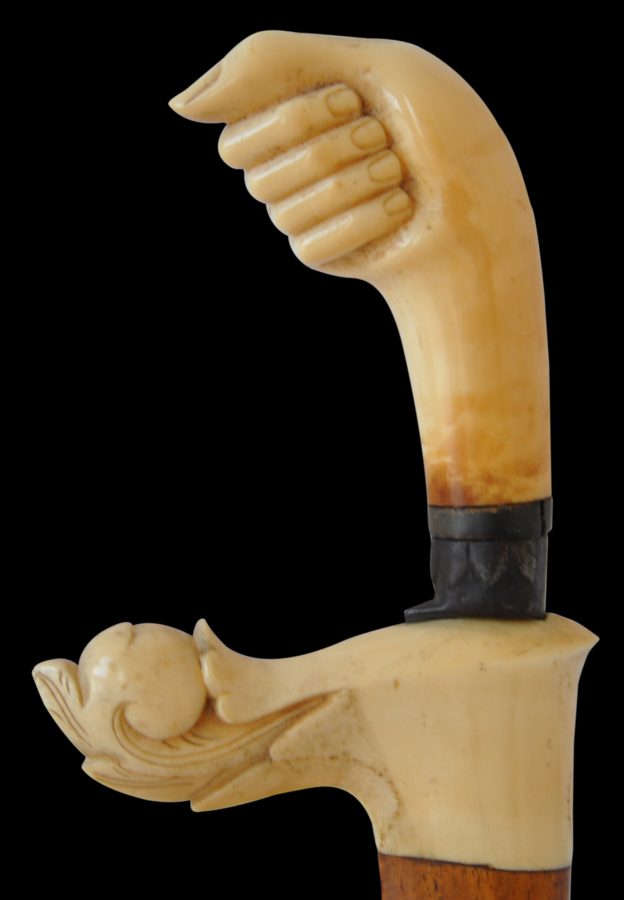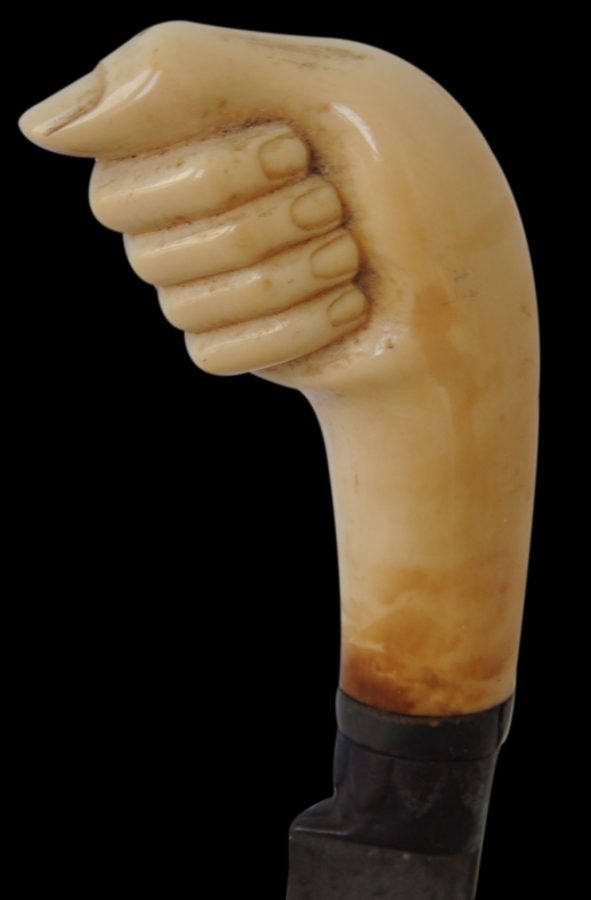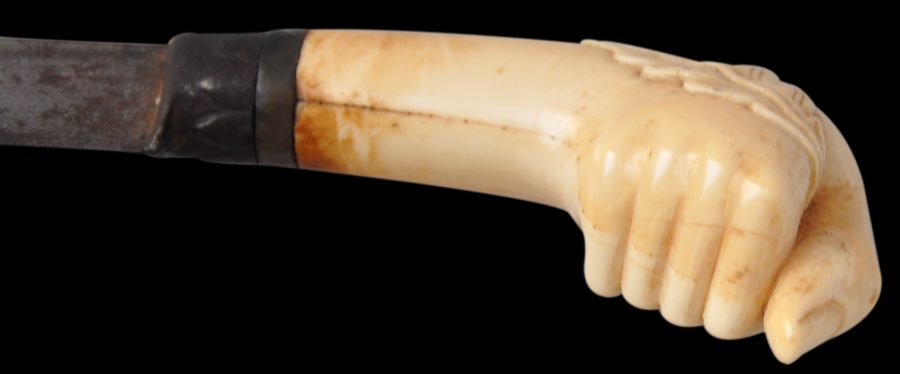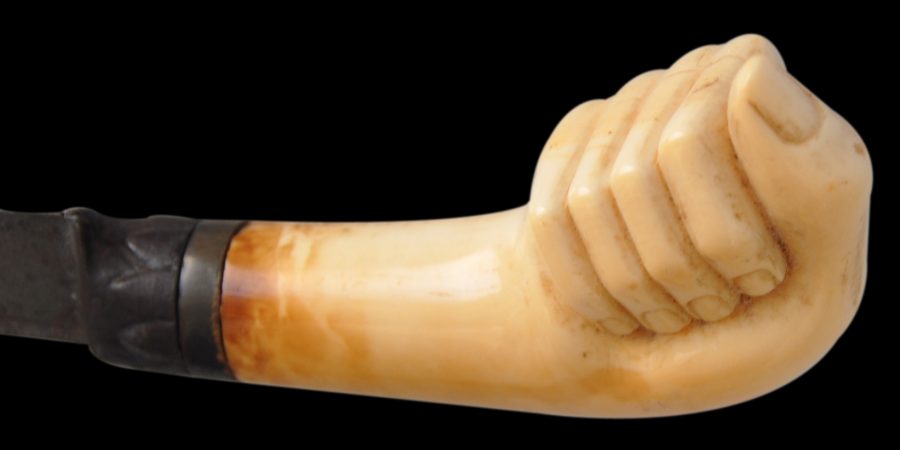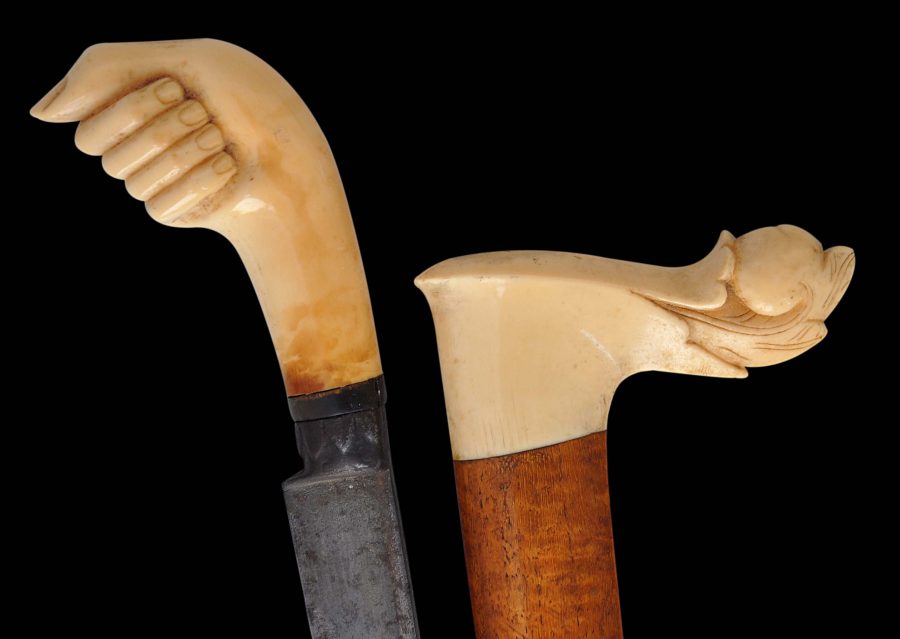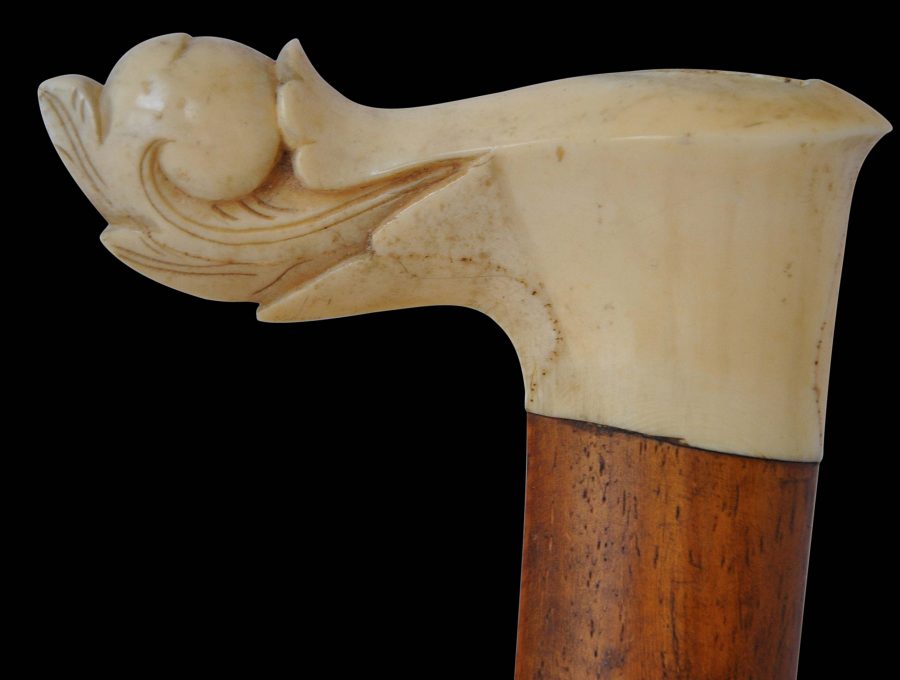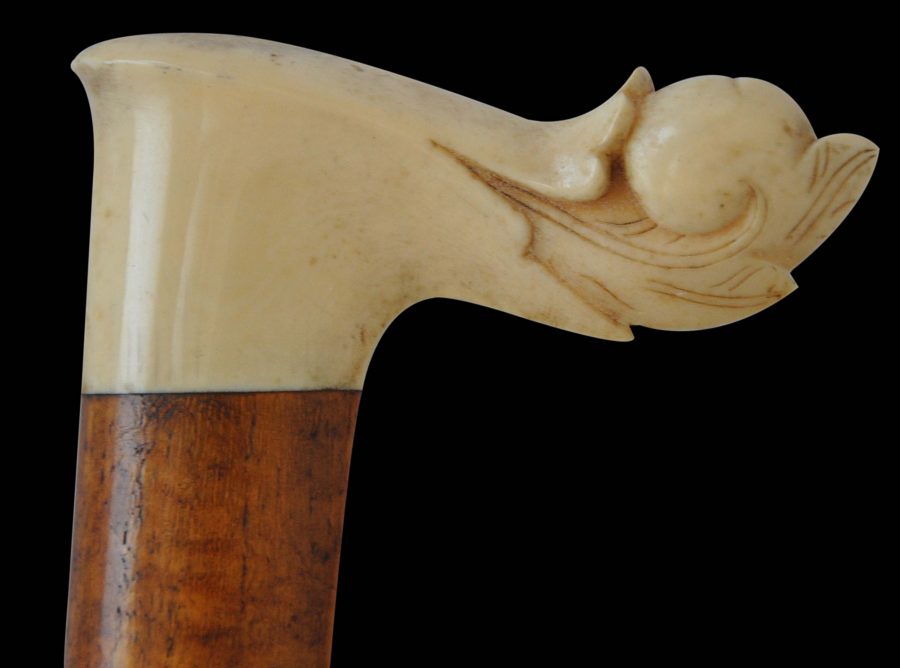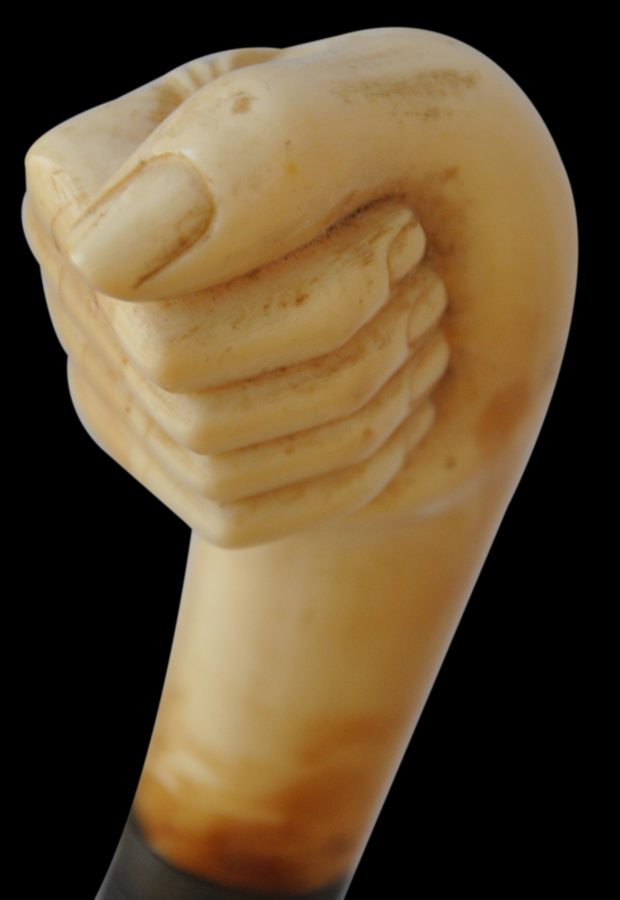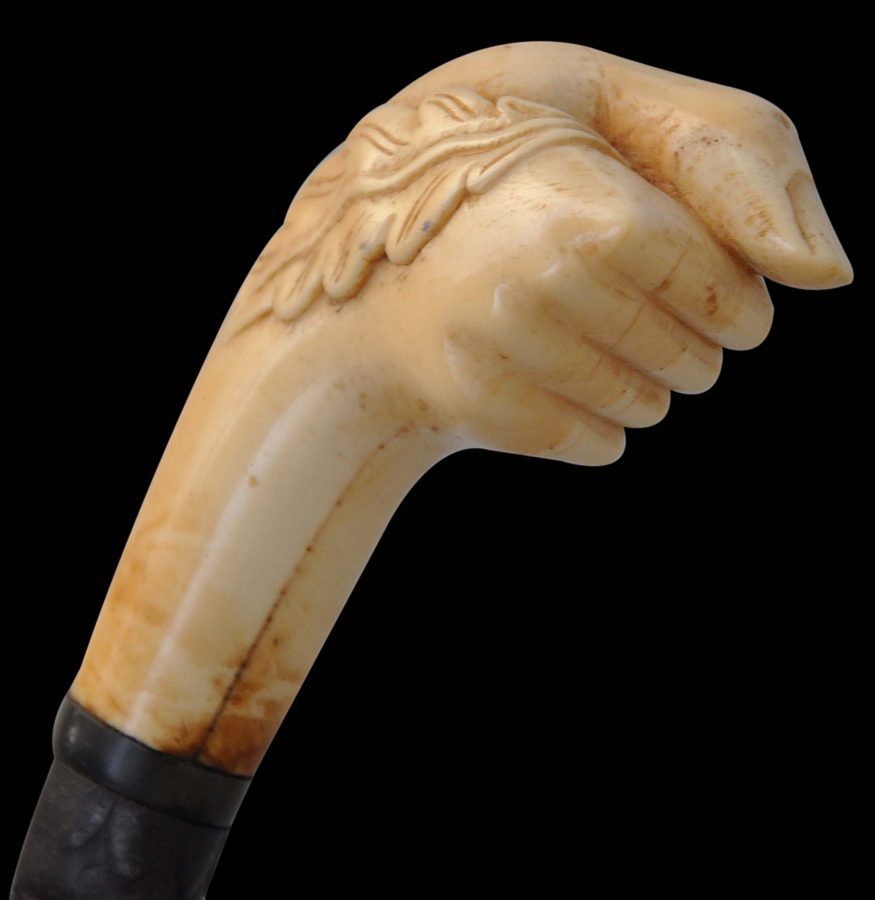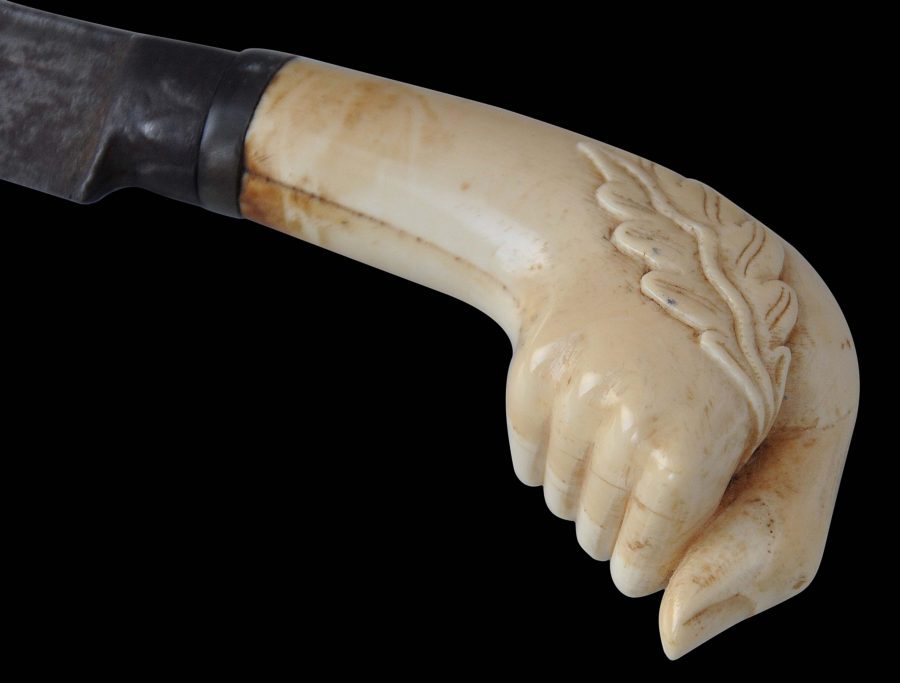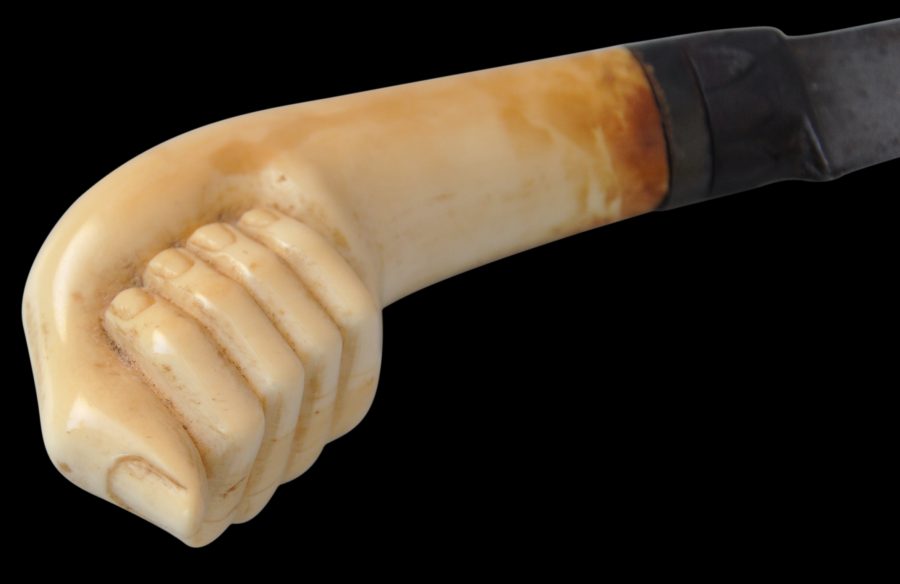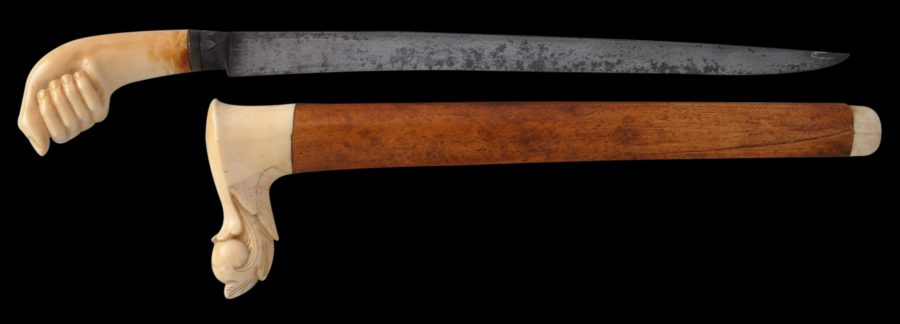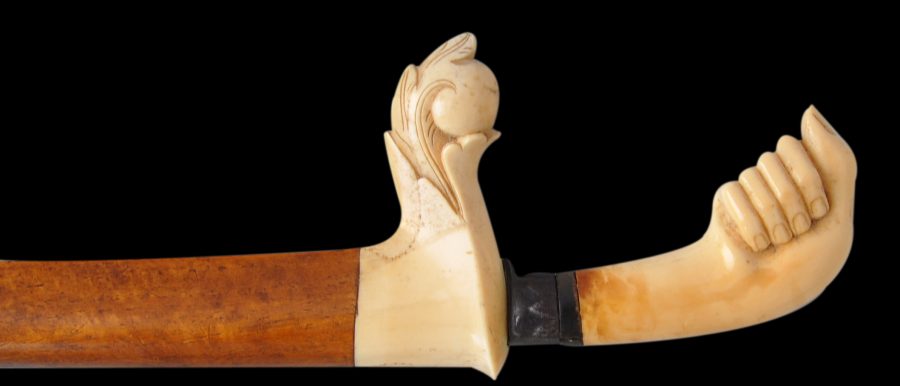This sewar dagger is illustrated in Hales (2013, p. 120). Quite possibly it is from a Minangkabau chief’s regalia, and is remarkable for its hilt, which is exceptionally well carved from hippopotamus tooth in the form of a clenched fist. The fingers and thumb are long and well defined, as are the fingernails. A leaf falls from the fist.
The pamor blade is largely straight and single-edged. The hilt ring is of horn. The scabbard comprises a barrel of lustrous fine-grained tropical wood with a plain, rounded chape and a hand guard and scabbard protrusion (cangge) finely carved with a typically Malay leafy flourish. The chape and hand guard also are of carved hippopotamus tooth.
Each piece of ivory has the tell-tale dotted lines of hippopotamus tooth. Hippopotamus tooth ivory was even more prized than elephant ivory for its density, colour and ability to withstand staining. Although native to Africa, the teeth were traded as far afield as Sumatra throughout the centuries by Arab traders.
The sewar is a dagger of Indian origin made to be carried in the belt. The form was adopted in Sumatra and became a common type of dagger among the various Malay and Malay-related groups of South and Central Sumatra.
The hand gesture of the hilt is not unlike a decorative fist cast to the butt of a cannon almost four metres long made by the Portuguese in the sixteenth century in Macau and used in Malacca before being transported to Batavia. The cannon, known as the Si Jagur Cannon is on display today in the old city square of Batavia (now near the port of Jakarta). The fist is in the fico gesture with the thumb between the two index and middle finger – a gesture that today has a vulgar meaning in Sumatra and Java. Accordingly, the cannon today has been imbued with magical properties associated with fertility, so that some Javanese women who have had problems conceiving will now sit on the fist in the hope that this will remedy the problem. The fist has subsequently developed significant wear and a fine patina on account of all those who have done this over the decades.
The fist on the sewar here is not in a precise fico position, but nevertheless has an unexpected prominence in the manner that the fist on the Si Jagur has. Undoubtedly, the fist here was intended to have some magical or talismanic properties.
The sewar is in very fine condition. There are no losses to the ivory and no repairs. Overall, it is a remarkable and rare piece.
Published/Illustrated
Backman, M., Rare Antique Asian & Colonial Decorative Arts, Paul Holberton Publishing, 2016 – see p.32.
Hales, R., Islamic and Oriental Arms and Armour: A Lifetime’s Passion, Robert Hale CI Ltd, 2013 – see p. 120.
References
Backman, M., Rare Antique Asian & Colonial Decorative Arts, Paul Holberton Publishing, 2016.
Hales, R., Islamic and Oriental Arms and Armour: A Lifetime’s Passion, Robert Hale CI Ltd, 2013.
Summerfield, A., & J., Walk in Splendor: Ceremonial Dress and the Minangkabau, UCLA Fowler Museum of Cultural History, 1999.
van Zonneveld, A., Traditional Weapons of the Indonesian Archipelago, C. Zwartenkot Art Books, 2001.


